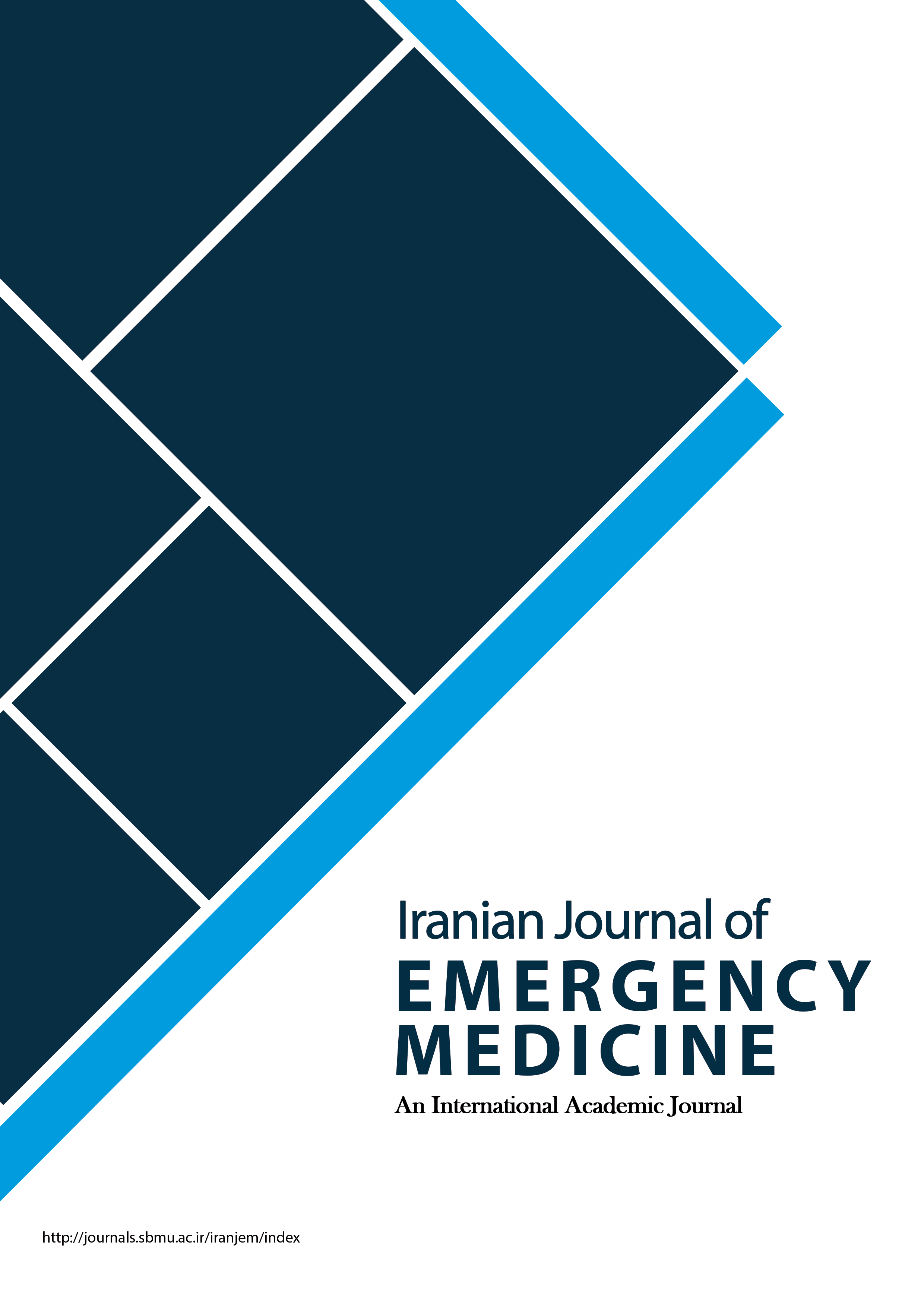Amiodarone can still be a drug of choice at emergency departments for pre-excited atrial fibrillation even in the face of guidelines prohibition
Iranian Journal of Emergency Medicine,
Vol. 10 No. 1 (2023),
30 November 2022
,
Page e8
https://doi.org/10.22037/ijem.v10i1.40732
Abstract
Electrical cardioversion or intravenous ibutilide are currently recommended as the acute treatment for pre-excited atrial fibrillation. Recent guidelines for this circumstance forbid intravenous amiodarone despite its effectiveness in blocking the accessory pathway and atrioventricular node due to the possibility of ventricular fibrillation. But as our presented case, some physicians continued to favor intravenous amiodarone successfully in a suitable setting.
- Atrial Fibrillation
- Wolf-Parkinson-White Syndrome
- Pre-excitation
- Amiodarone
How to Cite
References
Bauernfeind RA, Wyndham CR, Swiryn SP, Palileo EV, Strasberg B, Lam W, et al. Paroxysmal atrial fibrillation in the Wolff-Parkinson-White syndrome. The American journal of cardiology. 1981;47(3):562-9.
Tijunelis MA, Herbert ME. Myth: Intravenous amiodarone is safe in patients with atrial fibrillation and Wolff–Parkinson–White syndrome in the emergency department. Canadian Journal of Emergency Medicine. 2005;7(4):262-5.
Hindricks G, Potpara T, Dagres N, Arbelo E, Bax JJ, Blomström-Lundqvist C, et al. 2020 ESC Guidelines for the diagnosis and management of atrial fibrillation developed in collaboration with the European Association for Cardio-Thoracic Surgery (EACTS) The Task Force for the diagnosis and management of atrial fibrillation of the European Society of Cardiology (ESC) Developed with the special contribution of the European Heart Rhythm Association (EHRA) of the ESC. European heart journal. 2021;42(5):373-498.
Thanavaro JL, Thanavaro S. Clinical presentation and treatment of atrial fibrillation in Wolff-Parkinson-White syndrome. Heart & Lung. 2010;39(2):131-6.
Centurión OA, Shimizu A, Isomoto S, Konoe A. Mechanisms for the genesis of paroxysmal atrial fibrillation in the Wolff—Parkinson—White syndrome: intrinsic atrial muscle vulnerability vs. electrophysiological properties of the accessory pathway. Europace. 2008;10(3):294-302.
Klein GJ, Bashore TM, Sellers T, Pritchett EL, Smith WM, Gallagher JJ. Ventricular fibrillation in the Wolff-Parkinson-White syndrome. New England Journal of Medicine. 1979;301(20):1080-5.
January CT, Wann LS, Alpert JS, Calkins H, Cigarroa JE, Cleveland JC, et al. 2014 AHA/ACC/HRS guideline for the management of patients with atrial fibrillation: a report of the American College of Cardiology/American Heart Association Task Force on Practice Guidelines and the Heart Rhythm Society. Journal of the American College of Cardiology. 2014;64(21):e1-e76.
Wellens HJ, Bär FW, Dassen WR, Brugada P, Vanagt EJ, Farré J. Effect of drugs in the Wolff-Parkinson-White syndrome: importance of initial length of effective refractory period of the accessory pathway. The American Journal of Cardiology. 1980;46(4):665-9.
- Abstract Viewed: 168 times
- pdf Downloaded: 108 times



